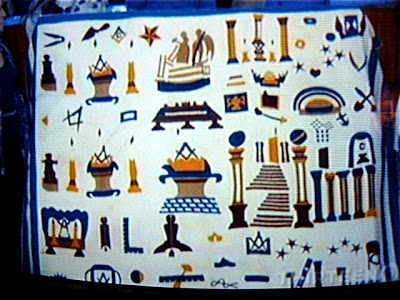“God hath chosen the foolish things of this world to confound the wise…For the wisdom of this world is foolishness with God.”
Corinthians 27:3
Sure, I wish the History channel would incorporate historical documentary into its programming, but I don’t think that’s “in the cards” any more, and I do enjoy some of its popular shows, like Pawn Stars. The episode broadcast this evening caught my eye thanks to an Al Hirschfeld caricature of Charlie Chaplin that was shown. To wit:
Titled “The End,” this is the final work of the artist intended for sale. I had no idea Hirschfeld was a lifelong friend of his subject. That story is explained here:
Al Hirschfeld and Charlie Chaplin were life-long friends. And Chaplin was the subject of Hirschfeld’s pen many times in Hirschfeld’s long career. The affection and respect that Hirschfeld had for Chaplin is fully evident in this and every other Chaplin that Hirschfeld drew.
Charlie Chaplin, The End was the last edition that Hirschfeld signed. And there is something else that is very important about Chaplin: In the 1930s Hirschfeld took a sojourn around the world as a passenger on successive commercial cargo ships. It was not comfortable, no, but as a young artist, Hirschfeld didn’t mind. The cargo ships carried him around the world, and when Hirschfeld found a port of call to his liking he would disembark and then continue his journey when the wanderlust grabbed him again.
When his ship docked on the isle of Bali, Hirschfeld fell in love with the magic he found around him. During the weeks that he stayed there, it was his routine to set up an easel near the piers and capture his surroundings with his brush.
Hirschfeld became used to the crowds of passengers from luxury liners who would often gather around him as an audience, onlookers over the artist’s shoulder. On one particular afternoon, Hirschfeld could feel the crowd thinning behind him as usual, but he was aware that one person still lingered to watch him work. Not wanting to be distracted by idle conversation, Hirschfeld was determined not to turn around. Hirschfeld continued to watercolor.
His fan kept watching. After what seemed to be an interminable amount of time, the man spoke: “Tell me how much money it would take for you to support yourself for one full year, so that you can continue to be an artist without worrying about money.” Hirschfeld took this question as idle chatter and fired back an unconsidered answer as he continued to work. A few moments later, Hirschfeld saw a hand reaching over his right shoulder. In that hand was a piece of paper. “Take this,” the man said. The piece of paper was a check made out in the exact amount that Hirschfeld had cited. The signature read: Charles Chaplin.
It was the beginning of a life-long friendship.
It brings tears to my eyes, still, that Hirschfeld’s first patron would also be the last portrait that Hirschfeld would ever sign, on January 20, 2003. The name of that portrait had been settled before Hirschfeld even began the working on it. Its title: “The End.”
Margo Feiden
(Emphases mine.)
It was Chaplin’s character, the Little Tramp, which made him an international superstar and Hollywood’s first millionaire actor. As iconic as any personality ever invented for film, the Tramp magnificently portrayed the eternal outcast—socially undesirable and suffering all manner of dangers and degradations, yet triumphant in the end thanks to his quick wittedness and happy adaptability. Like any of the fools in Shakespeare’s tragedies, Chaplin’s Tramp sees the truth, because he is not foolish at all, and he speaks the truth when truth is needed most. We’ve all seen him ambling about in his distinctive, humorous gait, with his cheap bamboo cane, and finding a flower to display in his scruffy lapel to attain some semblance of dignity and beauty.
Now consider The Fool of the Tarot:
Author Gordon Strong in his The Five Tarots writes:
The Fool has no identity; he is the phenomenal element, one always at odds with the causal. And we must never neglect his sense of the absurd for he refuses to accept any conventional or absolute truth. He also teaches us that humor is a path to the transcendental. We must never be too serious where transcendental matters are concerned, for this makes us heavy-hearted and it is impossible for our joy to take wing. The Fool thrives on improvisation, spontaneity—making the moment exclusively his own. He does not reflect or employ reason, yet his elevated state of awareness enables him to grasp the unity within chaos—the apparently haphazard events which make up existence. The Fool is every one of us, but he is also beyond our understanding. From that place originates his power—he is part of the unknown.
He carries in his left hand a white rose, the Rosa Mundi—soul of the world. The most perfect of flowers, the bloom of Eden—it sustains purity and passion, life and death… The rose is a sign of paradise, that of expanding awareness—its five petals representing the five senses… The Tarot Fool never causes sorrow by committing a rash deed; he is without guile. He never hides the truth from us; it is there for all to behold—if we have the sense to recognize it. It lies always within us, if only we could acknowledge it.
(Again, emphases mine.)
 |
| Charles Chaplin in City Lights, 1931. |
I have no idea if Charlie Chaplin had any interest in hidden wisdom of any kind, let alone the Tarot, but the Rider-Waite deck, with its illustrations by Pamela Coleman-Smith, was published for the public and began its ever rising popularity in 1910, only five years before Chaplin stars in The Tramp, indelibly imbuing the collective consciousness with that loving and lovable symbol on celluloid.
Not making a point. Just an observation.



































































